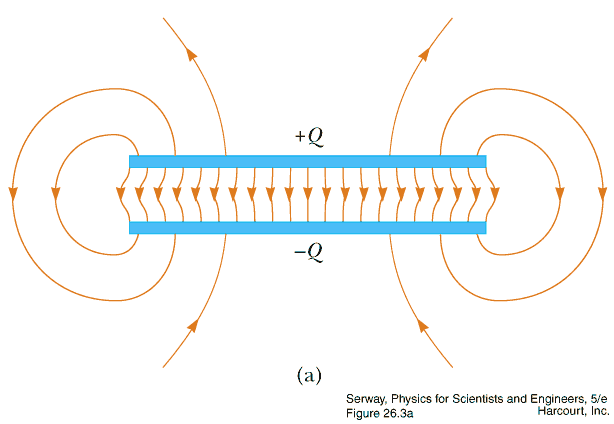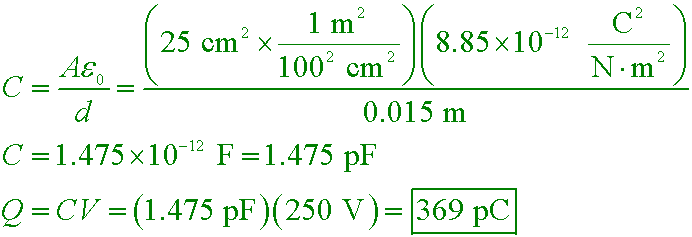Summary
- Potential due to distributed charges
- Potential and conductors
- Concentric shells example
Chapter 25

- Capacitance
- Practice:
Try these additional examples
Example #2
Example #3
- Prepare:
Read textbook sections 25-3 before the next lecture
Knight2 30.Q.12
Rank in order, from largest to smallest, the potential differences across these capacitors.

A. ΔV4 > ΔV3 > ΔV2 > ΔV1
B. ΔV1 = ΔV4 > ΔV3 > ΔV2
C. ΔV2 > ΔV1 = ΔV4 > ΔV3
D. ΔV3 > ΔV1 = ΔV4 > ΔV2
Answer
sb5 26.47
A capacitor with A = 25 cm2 and d = 1.5 cm is charged to 250 V. What is the charge
on its plates?
A. 151 nC
B. 369 pC
C. 519 µC
D. 17.1 mC
Answer
APB 1998.14
Two parallel conducting plates are connected to a constant voltage source. The magnitude of the electric field
between the plates is 2,000 N/C. If the voltage is doubled and the distance between the plates is reduced to
1/5 the original distance, the magnitude of the new electric field is
A. 800 N/C
B. 1,600 N/C
C. 2,400 N/C
D. 5,000 N/C
E. 20,000 N/C
Answer
D. ΔV3 > ΔV1 = ΔV4 > ΔV2
Apply the expression ΔV = Q/C to find the
potential difference across each capacitor and then compare the results.
B. 369 pC

E. 20,000 N/C

The electric field is uniform and constant between the plates and equals
ΔV/d (Eq. 20-4, see also Eq. 20-11). Doubling ΔV will double E,
and decreasing d by a factor of 5 will increase E by a factor of 5. The two changes
together will increase E by a factor of 10.




